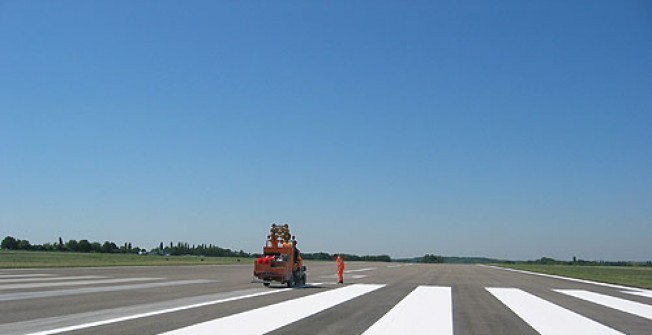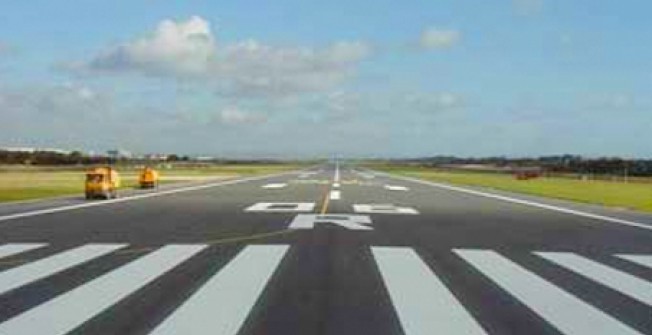We install outdoor surface painting nationwide across the UK.
We install outdoor surface painting nationwide across the UK.


As a leading provider of airport runway markings, our company specialises in ensuring the safety and efficiency of airport operations by meticulously applying pavement markings, lines, and symbols on runways.
Airport runway markings in Ambler Thorn BD13 2 can be easily provided. The typical airfield airstrip is roughly between 8,000 and 12,000 ft long so professional contractors are crucial in ensuring that the correct lines are fitted to the correct dimensions.
Jet blast areas are crucial components of airport runway markings that play a vital role in guiding both aircraft crew and passengers safely.
These designated zones help minimise the impact of engine thrust during takeoff and landing, safeguarding individuals and nearby structures from the powerful jet blasts.
By meticulously planning and implementing these essential markings, our company enhances the overall safety and organisation of airport operations, creating clear visual cues for pilots and ground staff to navigate through the bustling airport environment with precision.
If you would be interested in finding out more, get in touch with us today.
We are happy to give you everything you need to know in order to get the airport markings that suit you best.
Airport runway markings are essential for the guidance and safety of aircraft during takeoff, landing, and taxiing. These markings are standardised to ensure consistency across airports globally. Here are the main types of runway markings you'll find:
These markings are critical for navigation and safety, guiding pilots during various phases of flight operations.
The cost of airport runway markings varies depending on factors such as the type of paint used, whether epoxy, acrylic, or specialised road marking materials, and the application method, be it single-component paints or advanced two-component paint products.
Airport runway markings play a crucial role in aviation safety and efficiency, offering multiple benefits:
Overall, runway markings are indispensable for the operational integrity and safety of airports, ensuring that aircraft can operate safely in all conditions.
The standards for airport runway markings adhere to strict guidelines that mandate the use of retroreflective markings, durable paints like epoxy, and precise application techniques by experienced line stripers to ensure compliance with aviation safety regulations and visibility requirements.
Airport runway markings play a vital role in enhancing safety by facilitating clear traffic flow, guiding aircraft along runways, and providing visibility in various conditions through the use of durable paints, thermoplastics, and retroreflective markings that ensure optimal safety measures are in place.
Runway markings are standardised symbols and patterns painted on the surface of airport runways to convey important information to pilots during takeoff, landing, and taxiing.
These markings are designed to enhance safety, efficiency, and navigational clarity.
As a company that specialises in airport runway markings, we follow a detailed process that includes planning, design, and execution.
This involves surveying the runway, creating a design plan, and then applying the markings using specialised equipment and high-quality paint.
On average, airport roadway markings can last anywhere from 6 months to 2 years. However, regular maintenance and touch-ups can extend their durability.
The lifespan of airport runway markings depends on various factors such as weather conditions, frequency of use, and quality of materials used.
There are strict regulations set by the International Civil Aviation Organisation (ICAO) for airport runway markings.
These regulations ensure consistency and standardisation for runway markings worldwide.
As an experienced company, we adhere to these regulations and ensure our markings meet all safety requirements.
While there are set standards for airport runway markings, there is some room for customisation.
For example, markings can be adjusted to fit specific runway sizes and configurations. Additionally, some airports may choose to include additional symbols or signs for improved visibility and guidance.
Airport runway markings are typically made using highly durable and reflective paint or thermoplastic materials.
These materials are specifically designed to withstand heavy aircraft traffic and weather conditions, ensuring long-lasting and visible markings for pilots.
If you'd like to hear more regarding Airport Runway Markings in Ambler Thorn BD13 2 then please feel free to contact our specialist team as soon as possible.
They are experts in providing clients with key information to answer their questions. The sooner you ask, the sooner they can answer.